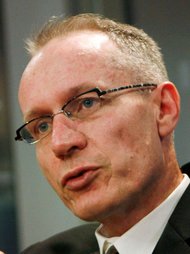
Nancy Folbre is an economics professor at the University of Massachusetts, Amherst. She recently edited and contributed to “For Love and Money: Care Provision in the United States.“
Some of the most vivid political rhetoric of 2012 reflects a debate that has lasted centuries. Who are the makers and who are the takers? Much economic theory revolves around efforts to distinguish the two. The conceptual effort is motivated by noble intent: presumably, a good economic system encourages making (creating more to go around) and discourages taking (redistributing what others have made).
Today’s Economist
Perspectives from expert contributors.
Yet it is surprisingly hard to create a consensus about these labels, and past disagreements, still unresolved, lurk in the background. History is shaped by contending claims over who is more productive than whom. Powerful groups like to describe themselves as makers rather than takers, partly to glorify themselves and partly to discourage take-backs.
Some ambiguity derives from our basic relationship to nature. Humans started out as takers, not makers, hunting and foraging for food. Even in the harvesting of crops, back-breaking labor counts for little compared with the gifts of soil, sunshine and rain. Modern economic systems still largely rely on fossil fuels, gifts from the past.
Because we don’t have to bargain or trade directly with nature, we don’t consider it a participant in our economic system. Rather, we compete with other humans for access to nature’s bounty. In the competition for territory, resources and political power, taking has proved as indispensable to economic success – if not more so – than making.
Think of feudal lords, who believed they earned the right to demand obeisance from their serfs because they offered protection from the depredations of other lords. A protection racket, in many respects, but as Jared Diamond persuasively asserts in “Guns, Germs and Steel,” Europe’s military prowess, honed by internecine wars, enabled an imperial expansion that worked to its economic advantage.
When John Locke laid the conceptual foundations of liberal democracy in the 17th century, he contended that a system that guaranteed men rights over the product of their own labor (including wild apples picked from a tree) would always prevail over a system based on arbitrary authority, like feudal dues or taxation without representation.
He excluded women from his theory, assuming that childbearing and family care were not forms of labor, but like apples, gifts of nature (until picked by men). Classical political economy, from Adam Smith to Karl Marx, presumed that women’s domestic labor was “unproductive” even if it was performed by paid servants.
Over the course of the 19th century, wives and mothers who worked long hours in the home rather than earning wages came to be described as “dependents” who were “supported” by their husbands, a description that early feminists fiercely challenged.
In debates over welfare reform in the 1990s, most Republicans and Democrats alike dismissed the idea that a “work requirement” could be met by anything but paid employment. Last April, however, conservatives rallied to the point of view that stay-at-home mothers are makers, rather than takers, challenging a Democratic strategist’s accusation that Ann Romney “never worked a day in her life.”
That particular argument was superseded by Mitt Romney’s assertion that members of families who paid no federal income taxes were all takers rather than makers. In the wake of the presidential election, he went on to suggest that President Obama was a winner only because he was a “giver,” redistributing income away from the makers to the takers.
Conservatives tend to describe government employees as unproductive, a legacy of the late 19th century Austrian school of economics, popularized by the writer Ayn Rand. Even those who emphasize the blurry line between making and taking, like the economist Tyler Cowen, seem convinced that “taking” is to the public sector as “making” is to the private sector.
But as the term “taking profits” implies, some private-sector income is based on speculation, rather than actual production. In the long run, standard economic theory predicts that profits, above and beyond returns to skill, entrepreneurship and the costs of capital, should attract new entrants into an industry, pushing profits toward zero in competitive markets.
Instead, the share of profits relative to wages has been increasing in both the United States and other affluent countries, not because workers are becoming less productive, but because technological change, deregulation and globalization have made it easier for owners to keep wages low. Increases in monopoly power may also help explain the rising profit share.
In sum, being a taker is not a sign of economic failure, and being a maker is no guarantee of economic success. Taking is not confined to the public sector, and making is not confined to the market economy.
Our own life cycles show us that taking and making often alternate in rhythm. We all start out dependent on the care of others, and many of us end that way as well. In between we hope to make a living not just for ourselves, but for others: those who made our past and those who will make our future.
A good economic system rests on sharing and caring as much as, if not more than, taking and making. Ever wonder why the first part usually gets left out of the story?
Article source: http://economix.blogs.nytimes.com/2012/12/31/sharers-takers-carers-makers/?partner=rss&emc=rss




